The future of transport is electric. Here in the UK, the Government is spending millions on new charge points and purchase incentives, making it easier than ever to buy and run an electric car. Volvo has pledged to only release partial or fully electric cars from 2019, and right now Tesla is electrifying everything it can, from cars to trucks.
The UK is on track to ban the production of all new petroleum and diesel cars by 2040. Most recently, London Mayor Sadiq Khan announced plans to combat the capital’s air pollution problem by extending London’s initial Ultra-Low Emission Zone. By October 2021, the zone will be 18 times larger than the initial zone, affecting an estimated 100,000 cars, 35,000 vans and 3,000 lorries daily, with a charge of between £12.50 and £300 per vehicle per day, depending on the vehicle type.
As the transition to electric vehicles accelerates, traditional objections over cost, range and charging difficulties are fading into the rear-view mirror. So why isn’t everyone rushing to their nearest dealership to buy one? The technology has made such rapid bounds that many don’t understand how they work, let alone whether they should buy one.
Let’s set the record straight by exploring the what, how, and why of electric vehicles…
From milk carts to Tesla: a brief history of the electric car
Electric vehicles have existed for nearly two hundred years. There’s no specific inventor as such, rather their development was the result of several curious minds experimenting with batteries and electric motors in the early 19th century.
Ányos István Jedlik was an EV pioneer. Back in 1828, he built a small electric vehicle using one of the earliest electric motors. Similar cars were assembled by Professor Sibrandus Stratingh in 1834, and Thomas Davenport in the same year. Then, in 1837, Robert Davidson of Aberdeen designed and built one of the first electric locomotives. These initial vehicles were, understandably, quite rudimentary. However, over time, designs improved.
Electric motors found widespread adoption in the early twentieth century, particularly with trams, trains, and intercity vehicles used mostly by the upper classes. As the nation’s road network grew, people wanted to travel longer distances. Oil and its derivatives seemed a surer way of getting about, and electric cars began losing their appeal.

Thomas Edison with an electric car in 1913, Image courtesy of Smithsonian
In 1912, Charles Kettering’s invention of the electric starter motor made cranking obsolete. This, and the abundance of oil available for refinement, gave the internal combustion engine the clear advantage over battery-powered vehicles.
In the 1960s and 70s, research and design crews laboured over the problems of charge, range, and power. Meanwhile, electric vehicles were effectively consigned to more ‘pedestrian’ forms of transport, like milk-carts, golf-carts and fork-lift trucks.
The electric vehicle renaissance
Interest in electric vehicles never died, but the potential benefits of electric cars became increasingly evident in the 1990s, as warnings mounted over greenhouse gas emissions and global warming.
An increasing number of global car manufacturers, including Toyota and Honda, foresaw an emerging market. They began developing electric cars as a climate-friendly alternative to conventional vehicles, with varying success.
In 1997, the Toyota Prius became the first mass-market vehicle to promote electric drive and captured the imagination of the new generation of environmentally-conscious motorists. The Prius offered a combined petrol engine and electric motor. It was a radical concept at the time, but performance was comparable with petrol-powered equivalents, while offering considerable fuel efficiency, while halving CO2 emissions. It was a significant leap forward, and paved the way for the next generation of truly electric vehicles.
When Tesla unveiled its Roadster in 2008, it was the first production line electric car powered by using a lithium-ion battery. Even better, it claimed to have a range of over 200 miles on one charge – more than enough for most journeys.
Tesla’s Master Plan was to launch the Roadster as a practical (but pricey) electric car for the luxury market, and then use the profits to begin work on a cheaper car, the Model S, which was the best-selling electric car in the US in 2013.
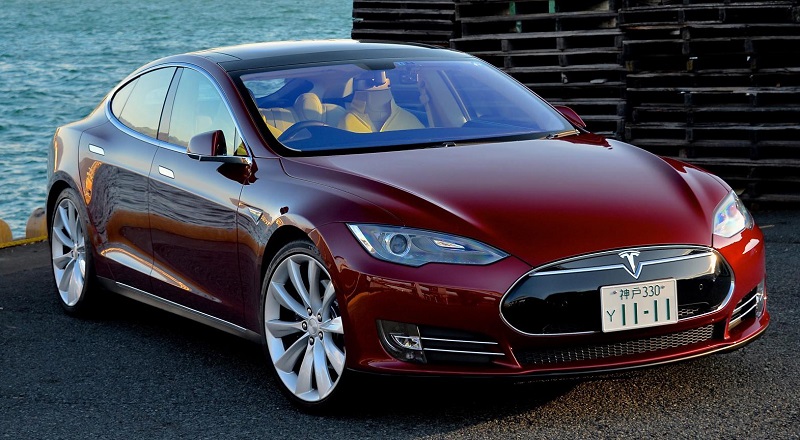
The Tesla Model S, the best-selling electric vehicle in the US in 2013, Wikipedia Commons
The final part of the Master Plan was to use the earnings from the Model S to fund an affordable, mass market vehicle. The result, Tesla’s newest car, the Model 3, shakes things up further. With a claimed range of up to 310 miles, the Model 3 proves lithium-ion battery technology is capable of incredible performance at relatively low cost.
It wasn’t too long before other car manufacturers were clamouring to enter into electric vehicle territory. Nissan, Renault, Chevrolet, and BMW have all started carving their share of this growing market, too.
While Tesla made electric cars more mainstream, increased competition and better technology have driven down prices, and with Government incentives encouraging new purchases, electric cars are in a fantastic position in the UK. Although admittedly starting from a very low base, electric vehicle registrations have shot up over 4,000% since 2013, from 3,500 to around 150,000 in May 2018, and there are now over 16,000 electric vehicle charge points around the UK.
How do electric cars work?
Conventional vehicles achieve motion through an internal combustion engine, which creates energy by burning fuel in a confined space. A system of gears in the powertrain then achieves motion that drives the vehicle’s wheels.
Electric vehicles use a completely different method to achieve motion. Energy is stored in a battery, and the vehicle achieves motion by drawing on this energy to drive one or more electric motors. This makes electric cars emission-free.
Some vehicles, like the Toyota Prius, use a combination of an electric battery and an internal combustion engine to achieve lower emissions with a greater range.
When you drive an electric car, the first thing you notice is the silence. The electric drivetrain runs far quieter than an internal combustion engine so, instead of hearing the growl of firing pistons, you hear the sounds of the street, countryside, or weather. Music is clearer, and conversation is easier, too.
All-electric, hybrid and fuel cell cars…what’s the difference?
The plug-in electric vehicle (EV)
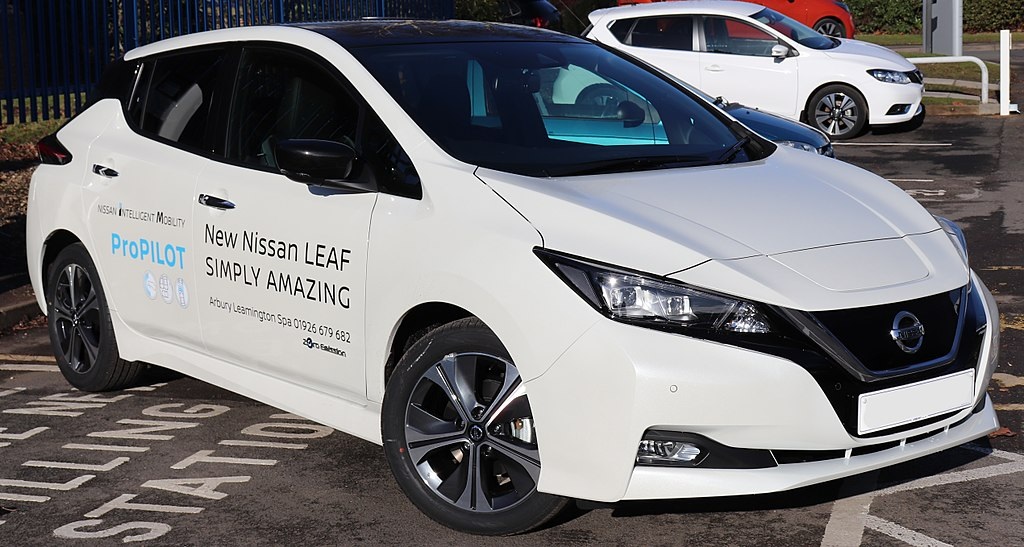
Nissan LEAF (2018 model), Wikipedia Commons
This is an all-electric vehicle (EV) with no internal combustion engine. Instead, you plug into a charge point to recharge its internal battery. Examples include all Tesla electric cars, the Nissan LEAF, and BMW i3. This is the greenest type of electric car, with no exhaust emissions, and is the most economical, in terms of running costs.
The hybrid vehicle
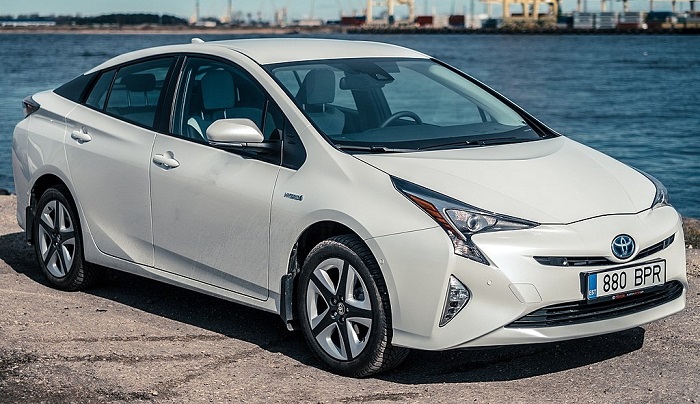
Toyota Prius Hybrid, Wikipedia Commons
A hybrid has both an internal combustion engine (ICE) and an electric motor. Depending on the model and drive mode, the electric motor will either move you forwards or make the engine more efficient. Examples include the Toyota Prius, Kia Optima, and Mitsubishi Outlander. Due to the ICE, hybrids emit more greenhouse gases than EVs, but still less than a purely ICE driven vehicle.
The fuel cell electric vehicle

Hyundai ix35 Hydrogen Fuel Cell Vehicle, Wikipedia Commons
Some electric vehicles use a fuel cell, such as a hydrogen cell, instead of a battery to power the electric motor. Although they emit only water and heat, fuel cell vehicles aren’t considered as viable for mass adoption as battery electric cars.
That’s because hydrogen needs to produced, requiring energy, and then transported and stored, before being converted by the fuel cell into electricity. This is more complex and less efficient than accessing electricity networks that already exist. That said, hydrogen cells offer a greater energy density than can be stored by conventional electric batteries, which makes it a more compelling option for users who need their vehicles to have a greater range.
Why the distinction matters
To get more people driving electric vehicles, EV technology needs to be efficient, cheap, and capable of making a significant impact on emissions. But decarbonisation of the UK transport system won’t progress as far or as rapidly if we’re still clinging to fossil fuels, no matter how small that dependency might be.
Adding a small electric motor to improve the ICE’s efficiency might dupe some into thinking they’re doing their bit for the planet – but the truth is more complicated than that. It’s crucial that manufacturers are clear in their marketing so customers can make informed choices about which electric vehicle is right for them.
Batteries included
Nearly all electric cars use lithium-ion batteries – the same battery technology you find in smartphones, laptops, and tablets. Lithium-ion batteries last longer, have high energy density (meaning they carry more energy with less weight) and work well at a range of different temperatures. That’s not to say engineers aren’t working on other solutions, but for the time being, lithium-ion batteries are practical, durable, and cheap to make.
Electric car batteries come in various sizes, often decided at the time of purchase, from the 40 kWh battery inside the Nissan LEAF, to the 100 kWh monster inside the Tesla Model S 100D. A larger battery doesn’t always mean more miles per charge, however, as they’re often used to drive bigger or more powerful cars.
Regenerative braking
When braking in a conventional vehicle, the brake pads waste kinetic energy by turning it into friction and heat, and you have to expend more energy to return to speed. Electric vehicles avoid such wastage by using regenerative braking.
When you brake in an electric vehicle, the electric motor cuts out and the residual kinetic energy turns motors that top-up the battery. Although imperfect, regenerative braking can recover 60-70% of lost kinetic energy. While this does make an electric car more efficient than a conventional one, it’s not an on-the-road self-charging mechanism – it just means less kinetic energy is wasted.
Driving distance of electric vehicles
The distance you can drive on one charge, called the ‘range’, depends on a number of factors: driving behaviour, location, battery capacity, weather conditions, the use of air conditioning and heating, and the size and weight of the car.
In the US, the Environmental Protection Agency (EPA) tests and rates electric vehicle range, using both in-house tests and in partnership with manufacturers. By simulating driving conditions in a controlled laboratory environment, the EPA calculates the estimated range for various environments, including cities and highways.
In Europe, the New European Driving Cycle (NEDC) calculates electric car battery economy, but has been criticised for being a little too optimistic. First conceived in 1997, NEDC is soon to be replaced by the World Light Test Procedure – a test that looks to consolidate global tests into one.
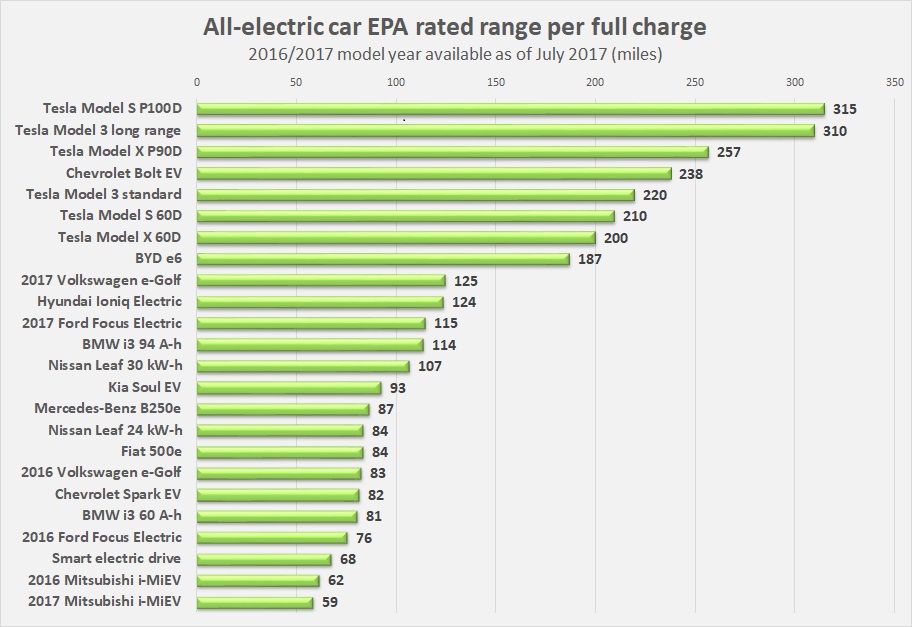
‘Range anxiety’ (the fear that your EV will run out of power before you reach your next charging point) is quickly becoming a thing of the past. There are 16,464 charge points throughout the UK as of May 2018, and the UK Government is funding more, so running out of juice in the middle of your journey is very unlikely. Conscientious drivers are also realising that driving more efficiently means they can squeeze even more miles out of their car.
Regardless of testing standard, it’s good practice to talk to other electric car owners and ask about their experiences. There are hundreds of forums for discussing electric vehicles, and collective experience often determines whether range claims are too good to be true. Better yet, talk to an expert from Octopus Electric Vehicles or test drive one for yourself.
What are the benefits of electric cars?
Electric cars are very cheap to run
One of the biggest benefits of electric vehicles for the consumer is their cost to run. Fossil fuels like petrol and diesel are expensive, with UK prices averaging around £1.24p per litre for unleaded petrol and £1.27p per litre for diesel. So what mileage does that get you in a year, how much does it cost, and how does it compare to an electric vehicle?
Let’s take a look at the cost of electric cars versus the three top-selling vehicles of 2016: the Ford Fiesta, the Vauxhall Corsa, and the Volkswagen Golf. In 2016, the average annual mileage per car was 7,800 miles, so we’ll use this in our calculations.

Estimates only. Source: Octopus Energy Investments
Based on our calculations, an electric car could save up to 65% on fuel costs. As our electric car range estimates are conservative, and their diesel/petrol counterparts among the most economical, you’ll likely save more. If you take into account falling renewable energy prices, and the fact you’re free of volatile fuel markets, driving an electric car could save £1,000s per year.
Electric cars need less maintenance
Another benefit of electric cars is their significantly lower maintenance costs. There are fewer moving parts in an electric car’s drivetrain than an internal combustion engine, so fewer things to break. That’s one of the reasons Tesla offers an infinite mile warranty.
You’ll need to replace the battery eventually, after around 100,000 miles if you want it performing optimally (though in reality, Tesla’s batteries still work well beyond this point). But expect far fewer trips to the garage with an electric car, and therefore less money spent on servicing and replacement parts.
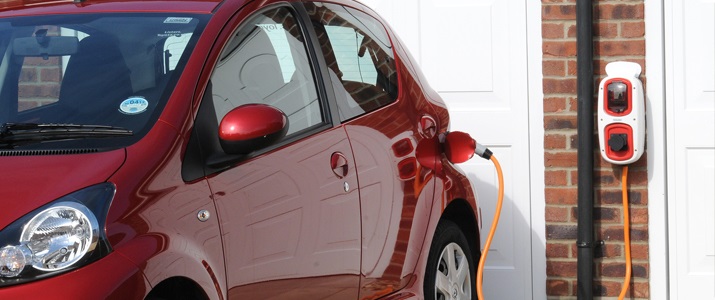
Plugging in instead of filling up, Image from Rolec
Finally, because you can charge your electric car at home, you don’t need to queue at petrol stations or remember to fill the tank on your way home. The charge point is your home; just plug in and charge. Of course, charging will take longer than filling a tank with fuel, but charge while you’re asleep and you’ll wake to a full battery in the morning. At other times, you can recharge at any one of the 12,454 charge points around the UK.
Electric cars can earn you money
For the UK to fully embrace renewables, we need to explore new ways of storing energy to cope with fluctuations in electricity generation and demand. If electric car owners give up their batteries for a portion of the day, this could help balance the grid at times when there’s too little or too much energy. This not only helps the grid, but also means we can use more renewable energy, and therefore, enjoy the benefits of a cleaner, greener Britain.
Driving habits are fairly consistent. Most people will drive their cars during the day, either on school runs or work commutes, with the occasional longer trip at weekends. When they get home and connect their electric car to the electricity grid, it acts as a balancing mechanism, either discharging when there’s too little energy or drawing power when there’s too much
In partnership with Innovate UK, Octopus Electric Vehicles is piloting such a Vehicle-to-Grid scheme in June 2018 with Energy Savings Trust and Chargepoint Services. Not only will it help customers choose the right electric vehicle, finance, and energy tariff, but also arrange insurance, maintenance, and a Vehicle-to-Grid charger – all for one low monthly price.
“When cars are left parked up or plugged in, there’s a lot of energy just sitting there doing nothing. With Vehicle-to-Grid, we’re helping customers to take advantage of cheaper energy prices by shifting their charging schedules. Customers will be able to charge their cars overnight, when it’s cheapest, and then earn money by selling excess energy back into the grid at peak times.”
Shaun McHugh, Octopus Electric Vehicles
Electric cars are better for the planet
Of course, the single biggest benefit of electric cars is their positive effect on the environment. The UK has promised to meet 15% of its energy needs sustainably by 2020. With transport responsible for over a quarter of greenhouse gas emissions, the race is on to shift away from burning fossil fuels towards a more sustainable transport system.
Here’s where Octopus is working hard to create a more joined-up approach to energy, by investing in the ideas and technology that will help speed up the UK’s transition towards renewables.
Octopus: keeping the UK’s lights on without it costing the earth
For a start, Octopus is the Europe’s largest investor in solar energy, and has a renewable energy portfolio valued at more than £2.5 billion. This portfolio features solar farms and onshore wind farms, as well as other renewable assets, such as anaerobic digestion, biomass and landfill gas plants.
We’ve used our experience of renewable energy to reimagine what the UK’s energy industry could look like, and to help make a future filled with zero-emission electric vehicles a possibility. For example:
- By providing ‘greener’ electricity at fixed prices: If motorists charge their electric car with renewable energy, the net effect is an electric car that operates emission-free. Octopus is also working closely with companies and institutional investors, acting as the catalyst for unsubsidised energy projects that can help drive the transition to clean energy.
- Clean ‘Transport as a Service’ (TaaS): We offer companies a bespoke service that solves their transport and Ultra-Low Emission Zone issues by providing fleets of electric vehicles, depot infrastructure and network capacity upgrades – all as a ‘pay per mile’ service. We’re currently helping businesses with fleets of vehicles of all types, including commercial vans, buses and taxis.
- ‘Next generation’ technology: Our partnership with Reactive Technology has created a smart energy platform to manage on-site energy demand, generation, storage and green energy supply from the Grid. It’s a great way for companies to manage their energy usage, particularly from vehicle fleets, much more flexibility.
At Octopus, we see this as a tremendous opportunity. Diesel and petrol engines emit a range of harmful pollutants, including sulphuric and nitric acids (the main components of acid rain). Removing these pollutants from our atmosphere greatly improves our health and ecosystems, while the reduction of greenhouse gases helps prevent climate change.
Not only do battery electric vehicles produce zero emissions at the tailpipe, but as we increase electricity generation from renewable generation assets, the whole energy supply chain can become zero emission. Electric cars reduce pollution and could save up to 50,000 lives every year.
Is the UK ready for an electric transport system?
The Government has promised to phase out new diesel and petrol cars by 2040. Some MPs urge ditching them sooner. The UK needs to decarbonise the transport system just as much as any other sector of the economy, and electric vehicles are poised to fill the gap.
It’s clear that a two-pronged approach is needed. Large vehicle fleets that run on diesel or petrol cause the most air pollution and will need to be replaced by electric versions sooner than domestic vehicles. The Government is prepared to hit companies who don’t switch with tough penalties. But there’s no reason why a more positive approach couldn’t also work, especially with domestic consumers.
In November’s Industrial Strategy white paper: Building a Britain fit for the Future, the Government pledged £100 million towards incentives on new electric vehicle purchases, and £400 million on new charging infrastructure. Vehicle-to-Grid schemes like Octopus Electric Vehicles are gaining ground, empowering consumers while providing flexible, grid-level storage for renewable energy.
What’s lacking is public support. Many people don’t understand the technology, or believe in its longevity. And for a large number of people, electric cars are still too expensive compared to cheap diesel models. The second-hand electric vehicle market is immature, making them a pricey luxury that only some can afford.
But all that’s changing. Government incentives and finance schemes are helping put electric vehicles within the grasp of many, and as the technology improves, prices will continue to fall and the benefits of electric vehicles will continue to grow.
With autonomous vehicles and the sharing economy, you might not need to own a vehicle at all. Getting to work could be as easy as tapping an app and waiting for a self-driving electric car to arrive at your doorstep. And although that technology is still some way off, at the very least it demonstrates that electric vehicles aren’t just changing transport, they’re changing lives – we believe, for the better.


